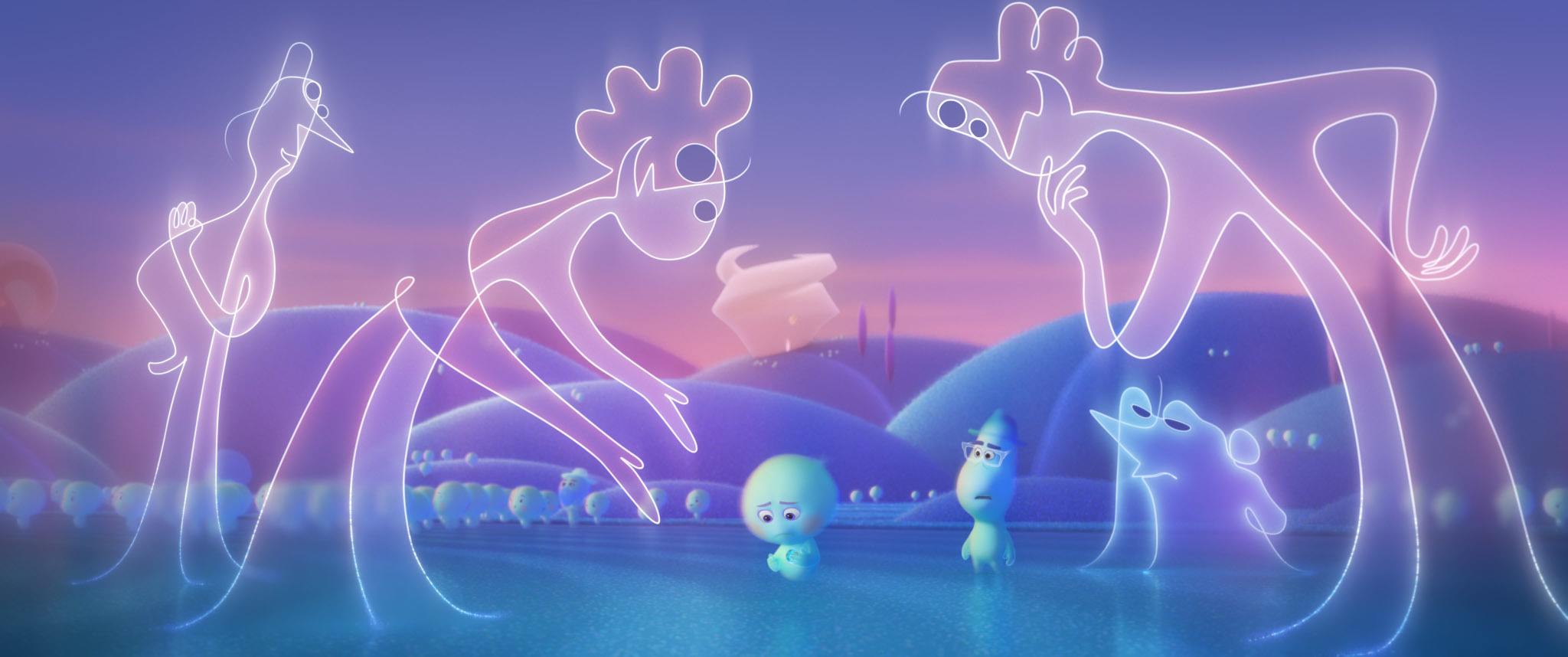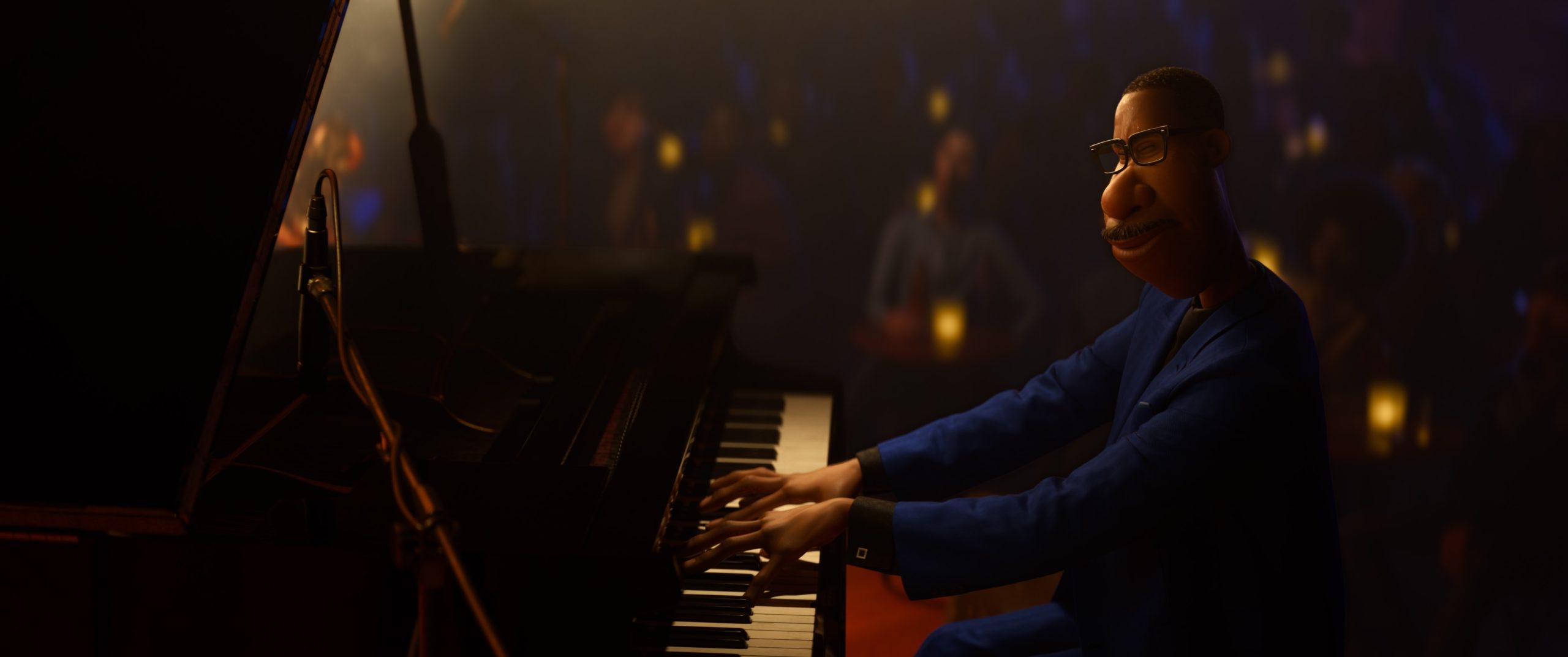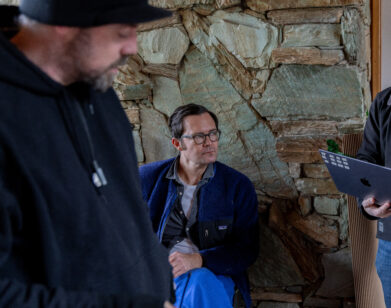exit poll
Pixar’s Soul Isn’t as Deep as It Wants to Be
 A Disney movie called Soul is a dubious proposition, and not merely because the brand represents one of the most public-facing S&P 100 megacorporations to have yanked the levers of consumer culture in human history. More so, Soul telegraphs depth, meaning, and sincerity in its very title, projecting a devious sentimentality as a mission statement. It signals that Disney is endeavoring to bring more conscientiousness to culture, and more pointedly to tomorrow’s adults, a self-serving branding exercise reinforcing Disney’s primacy as the feel-good family brand to end all family brands. Somehow it all seems a little on the nose, even from the studio that brought you Cars, a movie about cars.
A Disney movie called Soul is a dubious proposition, and not merely because the brand represents one of the most public-facing S&P 100 megacorporations to have yanked the levers of consumer culture in human history. More so, Soul telegraphs depth, meaning, and sincerity in its very title, projecting a devious sentimentality as a mission statement. It signals that Disney is endeavoring to bring more conscientiousness to culture, and more pointedly to tomorrow’s adults, a self-serving branding exercise reinforcing Disney’s primacy as the feel-good family brand to end all family brands. Somehow it all seems a little on the nose, even from the studio that brought you Cars, a movie about cars.
Directed by Pete Docter, Soul draws on the edutainment-therapizing of the director’s previous film Inside Out to raise the question of what constitutes a human soul—what makes life worth living? it bluntly asks—only never to land at a satisfactory answer. The film follows middle school band teacher Joe Gardner (Jamie Foxx) who longs to break out of his all-too-secure job to make it as a jazz great onstage, much to the chagrin of his practically-minded mother Libba (Phylicia Rashad). When a former student invites Joe to audition for the renowned saxophone player Dorothea Williams (Angela Bassett), he nails it, lands the gig, and promptly falls into a New York City manhole and dies. Realizing he is on a conveyor belt to “The Great Beyond,” he flees in the opposite direction and ends up in “The Great Before,” the place where fertile young souls are formed and sent down to earth to be born anew. He cons his way into becoming the unlucky mentor of Soul #22 (22 for short, voiced by Tina Fey), a centuries-old fledgling who’s so interdimensionally unlikable that she routinely fails to complete her soul development and make it to the mortal realm. The two make a pact for 22 to pass her test in order to give Joe her “Earth Pass,” so he can get back to his life. From there, adventures and hijinks ensue, through which Joe and 22 end up somewhat teaching each other about the meaning of life…abstractly, at best.
What made Inside Out one of Pixar’s most groundbreaking (and best) films was its phantasmagoric, cerebral storytelling, which deconstructed the subconscious mind and built a psychedelic adventure out of its disassembled components. It had deeply satisfying laughs, true mystery, heightened stakes, and shocking twists of emotion (Bing Bong’s “forgetting” scene an epiphanous sort of moment rarely encountered). Like Lewis Carroll’s Alice in Wonderland, Inside Out catapulted us into a netherworld of the mind and threatened to never let us leave. Soul, however, ping-pongs between Joe’s earthbound life—in an unrecognizably hygienic Manhattan—and an expansively scaled purgatory with seductive textural details; two equally shallow landscapes that make you wish the film would have picked one and taken it further. There is so much to mine in the experience of dying—Pixar taking on DMT hallucinations is a rapturous prospect and one missed opportunity of many—that the decision to portray the afterlife as a relatively banal, sanded-down, loose expanse of bubbles and soft-focus colors feels like the result of focus-grouping the world’s safest and most sanitized ideation of soul ascendancy imaginable.

Operating at a creative frequency far above and beyond its competitors, Pixar does manage to impress with its animation work, in parts: the bizarre, soothing textures of the purgatorial ether, the dark, purple-hued contours of the “zone” realm where our subconscious minds drift during peak creativity, and a wildly psychedelic dream pirate character who deserves his own essay, named Moonwind (Graham Norton). All that in mind, the film’s most impressive bits nevertheless come from a committee of bureaucratic spirit guides named “Jerry,” stylishly drawn as enigmatic line-doodles, who seem at once to be all-knowing and completely oblivious without any determining logic as to why. To broadly paint something as untethered as the eternal with the maddening bureaucratic frameworks of peak modernity also feels like something we’ve now seen too many times, everywhere from Beetlejuice to The Good Place to Albert Brooks’s Defending Your Life. Many of Soul‘s other attributes feel equally half-rendered, and by the third act, things seem to rush to the finish without tying up the myriad loose ends that have propelled the story. To wade into them is akin to much of the self-help guides made available on the commercial market: a waste of time.
An animating principle behind all Disneyana is that of perpetual hazard, an omnipotent encroachment of death, and pitting of the young against the old, ghastly, and fatal. In his landmark 1989 essay “The Dark Side of Disneyland,” Donald Britton marveled at the Disney theme park’s relentless preoccupation with mortality. Snow White’s Queen, he wrote, “represents what [Disney] amounts to pure evil: mortality itself, the brute fact that we grow old and die.” By engineering a living cartoon world, Walt Disney was seeking “to resurrect—to reanimate and make immortal—what time, in the non-cartoon world, destroys.” In its fairy-tale classics, Disney leans into fantasy in order to abstract the very real specter of death and decay, giving itself pleasurable room to extrapolate grim and menacing imagery, and in doing so, conjure an opposing heroism. Existential peril, in other words, is so real that it serves as a catalyzing mechanism for lofty adventures, character-building, and self-sufficiency. Each princess tale is, in its own way, an elegy to fractured innocence.
Soul, however, is elegiac to the idea of dashed dreams and surrendering to mediocrity, a startlingly middle-aged conundrum for an animated children’s film. Much like in Disney’s Marvel universe, Soul plays fast and loose with death, presenting a world where one can die and magically come back to life, leave one’s body, change bodies, return, and start over, all without anyone being the wiser or suffering any physical repercussions. It makes for a stakesless endeavor, eclipsed in cynicism only by the forced epiphany that makes up the end of the movie. Through a manipulative piano number (the score is brilliantly crafted by Trent Reznor and Atticus Ross), we see a barrage of details from Joe’s everyday life: flowers, passersby, pianos, shoelaces, even literal breadcrumbs. Perhaps life, the film suggests, is more about being merely present and taking in the finer details, and less about ambition, self-discovery, or creativity. Disney has pivoted from destiny fulfillment and self-discovery to valorizing complacency. It’s certainly an ideal quality for subscribers to Disney+.






